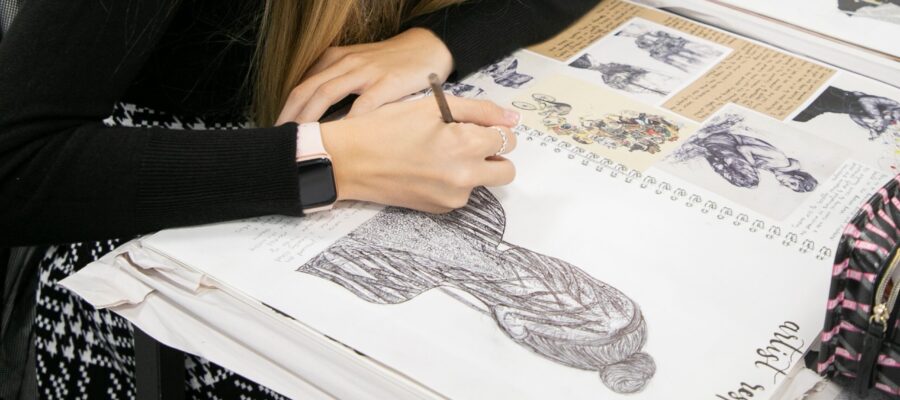
What will I study?
A Level Graphic Communication engages students in creative industry practice to prepare students for client based work within creative careers. Students explore a range of media both traditional and digital to respond to briefs within advertising, illustration, branding, information design, user interface design, concept art and animation.
The course requires students to make in-depth personal and imaginative responses to chosen briefs and has a strong academic element through the critical evaluation of the work of creative practitioners. Students learn how to develop ideas in response to contextual studies through exploration of media, techniques and processes.
This course consists of two components.
• Component 1:
Personal Investigation (60%)
The coursework includes a ‘Personal Investigation’ through sketchbooks and outcomes, and a written ‘Personal Study’.
• Component 2:
Externally Set Assignment (40%)
The examination includes sketchbooks and outcomes completed from January to April with a 15 hour exam to produce final outcomes.
Both components involve creative problem solving which requires students to undertake investigative and research work in addition to experimental exploration, looking at alternative ways of finding a solution. Sketchbook work needs to be informed, purposeful and extensive. Students must work with independence carrying out in-depth research from a range of primary sources, critiquing and referencing their experimentation before developing their final responses. The independent and open nature of work is demanding. Therefore, students must be prepared to be committed, self-motivated, and innovative risk takers.
Where will it lead?
This course enables students to move on to a wide range of Art and Design courses at Foundation and Degree level e.g. Graphic Design, Games Art & Design, Illustration, Design for film or theatre, Fashion, Creative Advertising, Animation, or a combination of Graphic Communication with English, Journalism, Business or Marketing. An Art & Design portfolio is a requirement for most Architecture courses and useful for any qualifications involving technical drawing. The creativity, problem-solving skills and personal resilience that students develop through completing this course are highly sought after across many sectors.
Links with other courses
Art and Design: Graphic Communication is complementary to most subjects but in particular; Media, English, Psychology, Business, Film Studies, History, Drama, Classical Civilisation, Computer Science, Textiles, Fine Art and Photography..

